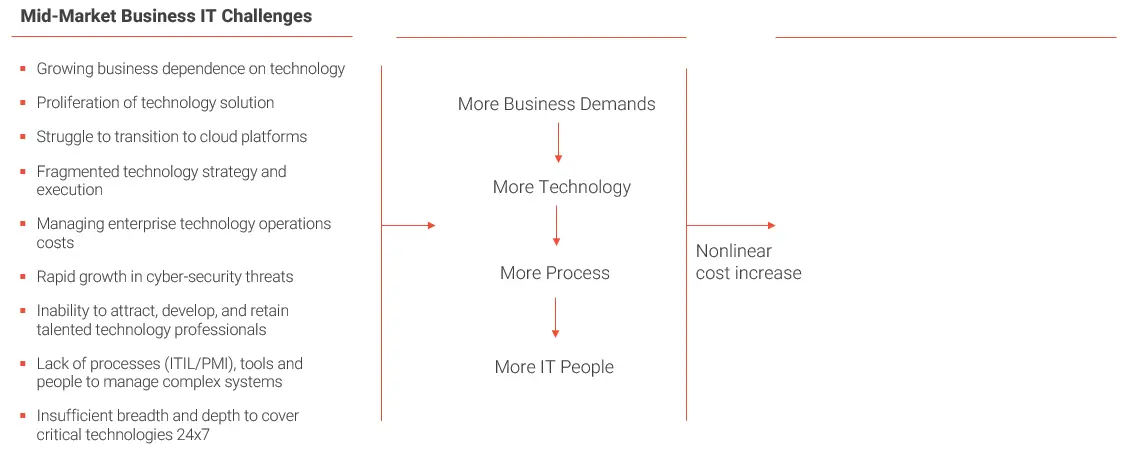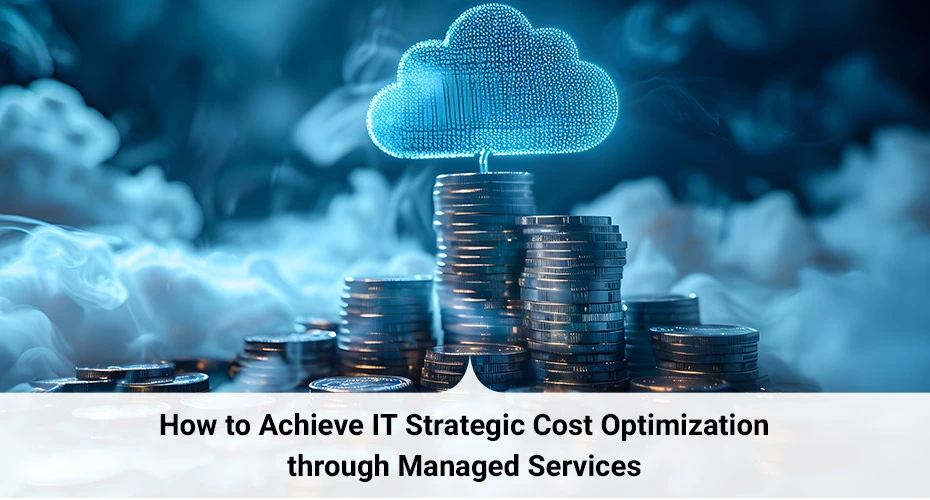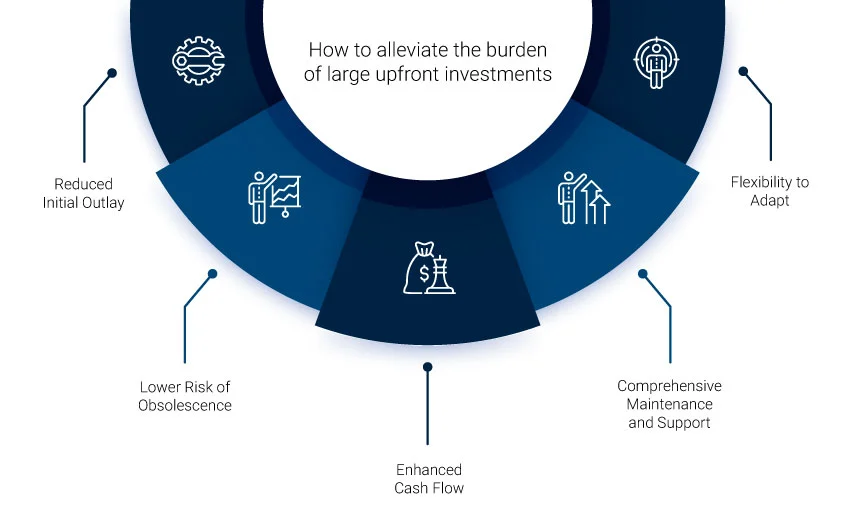Every company today is a technology company! If your organization isn’t investing heavily in technology, you’re in the minority. According to Gartner forecasts, worldwide IT spending is set to grow 7.5 percent in 2024. As organizations increasingly rely on technology to drive growth, the complexity of IT environments has surged.
However, managing technology is complex. This complexity poses significant challenges for Chief Information Officers (CIOs), with 76% expressing concerns that managing digital performance could become impossible due to intricate tech stacks. Companies are partnering with Managed Service Providers (MSP) to stay safe from complexity-driven inefficiencies, higher operational costs, and security vulnerabilities.
The bottom line is that the technology sprawl we have today creates more complexity and risk, which, ultimately, if not managed effectively, can drive up costs and hinder business results.
Challenges Faced by Businesses Due to Growing Technology Demands and Complexity
Highly complex technology stacks are generally less efficient and more expensive to operate. They can create a tangled web of applications and services that complicate management and hinder performance. As a result, organizations may face escalating costs without a corresponding increase in value or innovation.
1. Growing business dependence on technology
Businesses are increasingly reliant on technology to drive operations, enhance customer experiences, and maintain competitive advantages, making it an integral part of daily processes.
2. Proliferation of technology solutions
The rapid advancement of technology has led to many solutions available to businesses, which can enhance productivity and innovation but also lead to challenges in selecting the right solutions that align with business goals while avoiding unnecessary complexity.
3. Struggle to transition to cloud platforms
As businesses recognize the benefits of cloud computing, many face difficulties during the transition, which often involves significant planning and resources to address concerns related to data security, compliance, and integration with existing systems.
4. Fragmented technology strategy and execution
A fragmented technology strategy can hinder an organization’s ability to achieve its goals effectively, leading to inefficiencies and misalignment with overall business objectives, wasted resources, and missed opportunities for collaboration and innovation.
5. Managing enterprise technology operations costs
With the growing complexity of IT environments, managing technology operations costs has become increasingly challenging. Effective cost management strategies are required to optimize IT spending without compromising service quality or operational efficiency.
6. Rapid growth in cybersecurity threats
The rise in cyber threats poses significant risks for businesses relying heavily on technology, necessitating robust cybersecurity measures to protect sensitive information and maintain customer trust, leading to increased investments in security technologies and protocols.
7. Inability to attract, develop, and retain talented technology professionals
The demand for skilled technology professionals continues to outpace supply, creating challenges for organizations seeking to build robust IT teams and impeding innovation and the effective implementation of new technologies.
8. Lack of processes, tools, and people to manage complex systems
Many organizations lack the necessary processes (ITIL/PMI), frameworks, and tools to manage complex IT systems effectively, leading to inefficient operations and poor service delivery.
9. Insufficient breadth and depth to cover critical technologies 24/7
Ensuring comprehensive coverage requires strategic planning and investment in skilled personnel or managed services that can provide around-the-clock support, as gaps in support during off-hours or emergencies can impact service reliability and customer satisfaction.

Strategies for Managing Complexity through Managed Services
Organizations can leverage managed services as a strategic approach to cost optimization and efficiency to navigate the challenges posed by IT complexity. Here are some strategies to embrace to manage the increasing complexity of tech ecosystems:
- Centralization of Services: Organizations can streamline operations and reduce redundancy by consolidating technology services via managed service providers (MSPs).
- Automation and Standardization: Automating routine tasks and standardizing processes helps minimize human error and operational overhead, making it easier to manage complex environments.
- Cloud Optimization: Implementing a cloud-first strategy allows organizations to utilize scalable resources while optimizing costs. Managed services can help monitor cloud usage and identify underutilized resources, reducing unnecessary expenditures.
- Continuous Monitoring and Reporting: Utilizing tools for continuous monitoring enables organizations to gain insights into their IT performance and spending patterns, facilitating informed decision-making regarding resource allocation.
Benefits of Partnering with an MSP for IT Cost Optimization and Boosting Service Level Excellence
Partnering with a managed service provider offers significant cost reduction and service level excellence benefits. MSPs typically operate on economies of scale, which can lead to lower operational costs for businesses. Additionally, they provide specialized expertise and resources that ensure high service levels, including 24/7 support and proactive monitoring.
Major benefits include:
1. Increased Responsiveness to Fluctuating Market Demands
Organizations that embrace managed services can significantly enhance their agility and responsiveness to market demands. By offloading routine IT tasks to specialized providers, businesses can focus on strategic initiatives, allowing them to quickly adapt to changing market conditions and customer needs. This flexibility enables faster decision-making and the ability to pivot operations in response to emerging opportunities or challenges.
2. Enhanced Technology Capabilities
Partnering with managed service providers (MSPs) allows organizations to leverage advanced technology capabilities that may otherwise be out of reach. MSPs offer access to cutting-edge tools, expertise, and resources—all under one roof—that drive business growth. By integrating these technologies into their operations, companies can streamline processes, improve efficiency, and create new products or services that meet evolving customer expectations.
3. Improved Cost Predictability and Control
Managed services can improve business cost predictability and control. Organizations can better forecast their IT expenses by transitioning to a subscription-based model with an MSP, eliminating unexpected costs associated with hardware upgrades or emergency repairs. With this financial clarity, organizations can develop more effective budgeting and resource allocation plans, leaving enough room to invest strategically.
4. Continuous Adaptation to Evolving Industry Trends
Organizations that engage with MSPs benefit from constant improvement and the ability to adapt to evolving industry trends. They help you stay in sync with the latest technological advancements and best practices, ensuring that you leverage innovative solutions that enhance operational efficiency.
Save Money: Deliver Excellence: Start with Small Steps with Synoptek
Every strategic IT investment is driven by growth and stasis to absorb any churn or cut down bottom-line expenditures. As companies increase strategic IT spending to focus on modernizing outdated systems, reducing technical debt, and creating new revenue streams, partnering with the right MSP will help them lead the way.
Are you interested in gaining practical insights and actionable strategies to help re-examine your IT costs and maintain a long-term cost-optimization perspective? Watch our on-demand webinar to learn more: Strategic IT Spending: How to Achieve Cost Savings and Service Level Excellence.
Businesses looking for a managed services company in Orange County to streamline IT spending, enhance IT strategies, and maximize savings can connect with our managed services experts to start a conversation.





